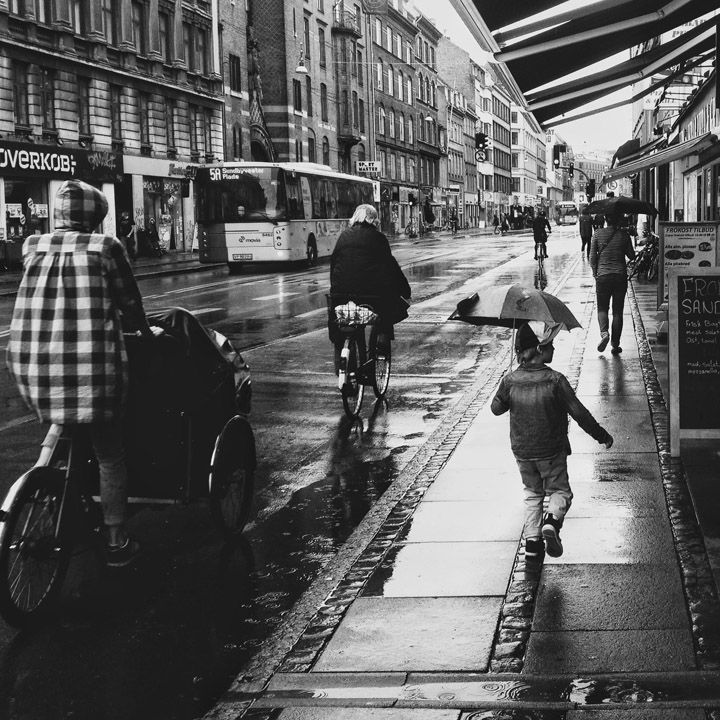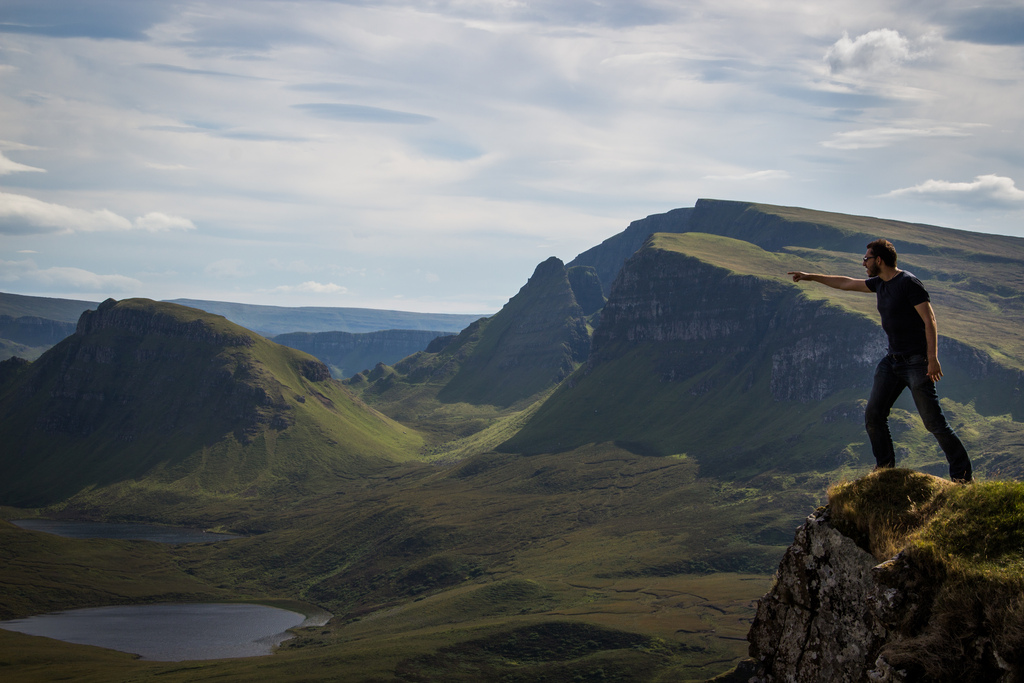A Crash Course Guide For Instagram

The past couple of months have been fantastic. I’ve jumped head-first into Instagram and had an amazing series of experiences. I’ve learned a lot, improved my Instagram photography radically and received incredible feedback including an extended stint on Instagram’s suggested user list. As I write this, I’m shooting on a fairly old iPhone 4s with a slightly defective camera which has forced me to get creative with how I edit and how I shoot. I’m sitting just shy of 50,000 followers on Instagram and have put together this post to share what I’ve learned and to answer some of the most common questions I’ve gotten over the past few months. This post is tailored to Instagramming from an iOS device, but should have ample advice for those using Windows or Android as well. Like this guide and my photography? Head on over to Instagram and follow me @VirtualWayfarer.
Community
Instawalks – One of the most helpful and influential things I’ve done since diving into Instagram has been attending an Instawalk, an Instaride, and jumping into a few Instagram communities on Facebook. What are Instawalks and Instarides? They’re when a group of Instagrammers get together to take photos, get to know each other, and exchange expertise. It’s also a great opportunity for collaborations and mini-features. For traveler’s it is a great way to get a more organic insight into the destination you’re visiting while for locals it is a rich social experience and often results in seeing and exploring parts of the city you’re unfamiliar with. I’ve been absolutely blown away by the level of skill and sense of community within Copenhagen/Denmark’s local Instagram community and cannot wait to get involved with Instawalks during my travels. You can usually find Instawalk events through Facebook, Meetup.com, and Instagram. It is also an excellent way to discover local talent that might otherwise get lost or obscured in the general noise that goes with active Instagramming.
Instaetiquette – Conventional web etiquette for Instagram and Twitter suggested that you should follow those who followed you. While this was great in theory, it has created huge issues with actual engagement. When it comes to Instagram you should be selective in who you follow and only follow the accounts you find interesting, inspiring, or get value out of. If you’re using services that monitor who unfollowed you on Instagram you’re doing it wrong. Find Instagram accounts you like, follow them, comment often, and engage with them. If other people like your material, then let them follow you. Don’t take it personally and don’t worry about what your follower to following ratio looks like. Remember – you’re not just on Instagram to share, you’re also there to view and engage with the community.
Non-Mobile Photography – Another component of Instaetiquette is the use of non-mobile photos. When the service first launched it was generally accepted that the site was for showcasing mobile-only photos and that these shots should be shot on a mobile phone, edited on a mobile phone, and posted from a mobile phone. I fell into this category and admit it look me a long time to accept that Instagram is no longer a mobile-exclusive platform. The clincher? A close look at blog.instagram.com and the realization that they were sharing a lot of dSLR photos. Instagram is now for sharing all types of photos and while a majority of those photos are and should be taken and/or edited on mobile it is also a wonderful platform for other types of photo and video content. While it is great if you do mobile-exclusive content, sharing dSLR or otherwise edited content is equally acceptable. To upload this non-mobile content you’ll need to create a custom folder, add the files manually (and re-size them to something reasonable) before syncing them with your device. In iTunes this can be done through the sync photo and video menu. One thing you should NOT do, however, is pass off photos as something they are not. If you took your photo on a dSLR – be up front about it. The same goes with any editing you may have done.
Weekly Challenges – Every weekend Instagram issues an official Weekend Hashtag Project on their blog. You can see an example here. These require the shots be taken over the weekend, are a cool way to discover new people to follow, and are a fun challenge to participate in. They also have the potential to get you noticed and to get some cool feedback.
#Hashtags – While hashtags play a minor role on many other sites they are a key part of the Instagram universe. If you want to help people discover your content, or if you are taking part in an event (such as an Instawalk) it is common practice to add a number of hashtags to your photos. I follow a two-pronged approach. In my description (which is usually at least 20 words) I’ll hashtag a handful of words that are relevant. As I do this, however, I am very mindful of respecting my readers – after all, there are few things more annoying and ugly than a huge block of hashtags getting in the way of the written or visual content you’re trying to view. An example of this might look like, “Who can identify where today’s #travelingboots shot is from? This is part of my 360+ piece series of #travelingbootshot photos which spans 6 years, 22 countries, and 5 continents. #travel #adventure #lifestyle #canon”. Depending on how long the text description is, I’ll add a number of relevant hashtags at the end – but usually try and keep it to five or fewer. Ultimately, you’ll want to add a lot more hashtags (again, within reason) but this can and should be done in a follow-up comment on the photo. Luckily, Instagram hotlinks and registers hashtags in comments as well as in the initial description. This means that you can typically return to the image a few hours, or a day later and then add in a comment that is a pure block of relevant hashtags. Remember: The tags are only there to help people discover your photos and to engage with the community so don’t over-do it.
Apps & Editing
While I use Lightroom to edit my dSLR photos on my desktop I am blown away by the power, convenience, and polish of the on-device editing tools available for mobile. This is where, historically, Apple has gotten a lot of credit – but, have no fear, there are a wealth of new up-and-coming apps for Android and Windows which seem to be eager to give the iOS environment a run for its money. It is very important to accept that if you want to kick your Instagram and Mobile Photography up a notch, you’re going to need to learn how to edit your photos. This may also mean using multiple apps to process a single photo. BUT, that does NOT mean that the process will take a ton of effort, time, or energy. The truth is that different apps are great at different things. I’ve included three apps which I use regularly in addition to the official Instagram app, and a final app which is useful for situations where you need more robust camera options.
Snapseed – A while back Google purchased Nik Software. Snapseed gives you access to a lot of Nik Software’s incredible editing tools and is perhaps one of the smoothest and most robust editing suites available. The interface is incredibly intuitive and designed for very fast editing on mobile devices. While I do a lot of fine tuning with the app, the two most essential features are the app’s ability to create HDR images and its ability to enhance crispness and detail.
HDR Photos can be created and edited by sliding the main navigation to the right before choosing the “HDR SCAPE” option. This will apply the basic HDR filter. Once active, press and hold on-top of the image while sliding up or down to see the list of four options. These are filter strength, brightness, saturation, and smoothing. I typically set my overall filter strength, max smoothing, and then fine-tune with brightness and saturation. However, for every one shot I choose to convert to HDR and post there are three to four which I decide are a better fit for a different visual style. Make sure to watch for excessive noise, overly exposed whites, and anything that creates colors that don’t fit with the organic essence of the image. Remember – HDR is about creating a dramatic image, not one that looks like someone vomited melted crayons on an otherwise decent photo. Remember that simply turning a photo into HDR won’t make an otherwise crappy photo into a keeper. Some images just aren’t meant to be shared.
My second favorite feature in Snapseed is under the DETAILS navigation menu. Once again, hold over the image, and drag up or down to select between the two options available. These are sharpening or structure. In general I suggest avoiding the use of sharpening whenever possible. This tends to decrease the quality of your image and create a lot of artifact noise. Unlike sharpening, the structure feature has been an absolute lifesaver for my mobile shots. It needs to be used sparingly, but it does a beautiful job adding crispness to an image and really making it pop without harming the integrity of the image. Do be careful when using it on blue skies though as it will start to create unwelcome noise and visual artifacts when used excessively.
The app has a ton of additional options which are well worth exploring and using. My biggest frustration with it is that undoing effects once applied to the image is virtually impossible.
VSCO Cam – While the recent updates to the official Instagram app and new competitors have left VSCO in need of a refresh it is still one of the best phone apps out there. The Visual Supply Company (VSCO) are well known for creating fantastic filters for photo editing. Their app has a number of preset filters which are a great starting point and much more attractive than the defaults on Instagram. You can also find quite a few add-on filters for the app, some of which are free, others of which are for-purchase. In addition to a really nice editing suite and quite a few options that are great for getting that slightly faded low-contrast look or creating excellent black and white photos the app also has a robust camera built in that allows you to set both exposure and your focal point independently. The other huge component that makes VSCO Cam a must for most Instagrammers is the community attached to it and the VSCO Grid. There is a very active community using tags like #VSCOCam, #VSCOEurope, #VSCODenmark, etc. – which is a great way to discover gorgeous shots and to get your own work seen.
Picfx – While fairly robust in its own right, I largely use this app for two filters. These are within the PFX Film -Set- and are the PFX 5 and PFX5x presets. Once applied you can adjust the intensity of the filter by tapping the image and dragging the transparent slider on the right up/down. I find this adds the perfect low-contrast/light fade to images which is otherwise somewhat difficult to get in the other apps. VSCO Cam does a decent job of it, but I love the balance and ease of crop in Picfx. Do make sure to experiment with the other options, as the app itself does have a ton of potential and quite a few other filters to experiment with.
AvgCamPro – This nifty app allows you to shoot stacked images. You can take a single shot with a timed delay, or a series of shots at various timed intervals which are then compressed into a final image. If you want to capture people in motion, do slightly longer exposure effects, or eliminate people all together from a shot this is a great resource. I know a number of Instagrammers use it in combination with a tripod to shoot selfies and to do creative shots that feature a person without having to worry about recruiting a friend to model for you.
Instagram Official – I do very little actual editing inside the official app. I typically avoid the sharpen option and existing default Instagram filters like a plague. The one feature I do use quite often is the built in vignette filter. Just remember, while adding vignette can really make an image feel deeper and more compelling, it is also just as easily over-done. Also, be careful not to over-use the tilt shift and circular blur options. A dab of added saturation is great, but don’t overdo it and remember – contrast and exposure can be your friend but are often best done earlier in the editing process.
Sample Workflows
When editing, I always try and keep in mind that each photo has an ideal visual style that will really make it work. Some photos are best in a near-natural state, others are made for black and white, while yet others look fantastic with a light fade and vintage filter or the intense colors of an HDR filter. Don’t be afraid to experiment and always be flexible in how you edit the photo.
Gentle Fade
Import into Picfx -> Crop -> Apply PFX 5 filter -> Export. Import into Snapseed -> Apply Details filter -> Increase structure -> Apply Tune Image filter -> Increase saturation -> Export. Import into Instagram and finalize post.
HDR
Import into Snapseed -> Apply HDR filter -> Adjust levels, saturation, and smoothing -> Apply Details filter -> Increase structure -> Straighten image -> Crop image -> Export to Instagram -> Add vignette -> finalize post.
Black and White
Import into VSCO Cam -> Crop -> Switch to filters -> Select Black and White filter (I have a number of add-on filters I’ve downloaded and/or purchased) -> Tap filter icon and reduce intensity from +12 slightly -> Export. Import into Snapseed -> Apply Details filter -> Increase structure -> Apply Tune Image -> Adjust Contrast and Brightness -> Export to Instagram -> Apply vignette -> finalize post.
Minimal Edit
Import into Snapseed -> Apply Details filter -> Increase structure -> Apply Tune Image filter -> Increase saturation -> Export. Import into Instagram and finalize post.
Video
Instagram is still dominated predominantly by still images. However, there is a push to incorporate mode video moving forward and we’re starting to see some highly innovative applications of embeded video. It’s a great platform to explore recording and uploading new footage as well as sharing some of your existing footage which may or may not have been filmed on your phone. The new camera in the latest generation of mobile phones also makes it clear that we’re only just starting to explore the full potential of mobile video.
Hyperlapse – Instagram’s first stand alone app, the Hyperlapse app is a fantastic piece of technology. However, it is also still pretty limited. It allows you to shoot great timelapse photos on your phone, or to use the app’s considerable image stabilization abilities to take moving footage which can then be sped up as much as 12x. I expect that in future updates the issues with quality degradation during upload to Instagram, crop issues, and a better system for setting focus and exposure will be integrated. In the meantime, it is a great tool for taking fun and creative videos.
Non-Mobile Video – With a bit of back-stage wizardry it is possible to modify existing video using more conventional methods and footage shot on a dSLR, dedicated video camera, or even on your phone but then edited on your desktop/laptop and then upload that footage to Instagram. Keep in mind that you’ll need to export the file in a Instagram friendly format, and should pre-crop the video file from a rectangular to a square format before export. Once done, add it into the sync folder similar to how you would upload your dSLR images, make sure you have video checked, and then push it up to your phone. From there you can post it to Instagram, apply filters, and take it live. Just remember, you’ve only got 15 seconds so make sure it counts.
Have apps I should check out? Tips to try? Additional advice or questions? Let’s hear them in a comment below.


Thank you, thank you! I’ve been looking for a post just like this to help me not take crap Instagram pics!
Very helpful 🙂
Cx
Thrilled to hear it was useful!
Hyperlapse looks awesome. Microsoft have been working on something similar for a while but too slow to market it seems. Only prolem with Hyperlapse is that it is only IOS at the moment. I am on Android so need to wait for the red tape to be cut.
Yup, some very cool products in the works across the board. Can’t wait for a few tweaks to Hyperlapse and for it to go live on Android.
Alex can’t thank you enough for such great information! I avoid fiddling too much with my shots because it always seems to take time to get it right but now I look forward to experiencing with your suggestions. I am always amazed at your creativity and your willingness to share!